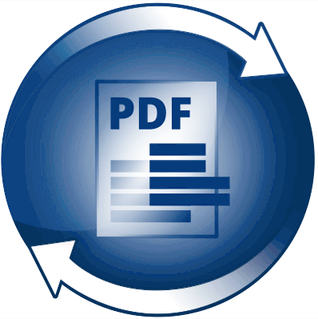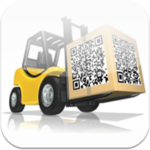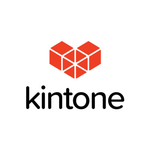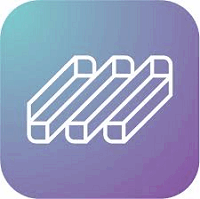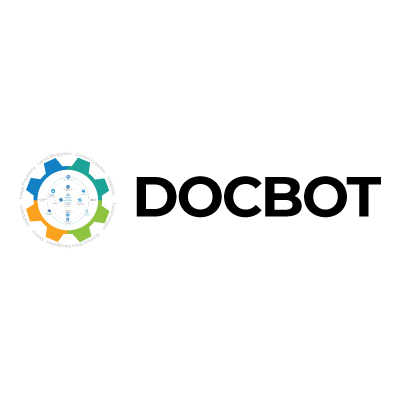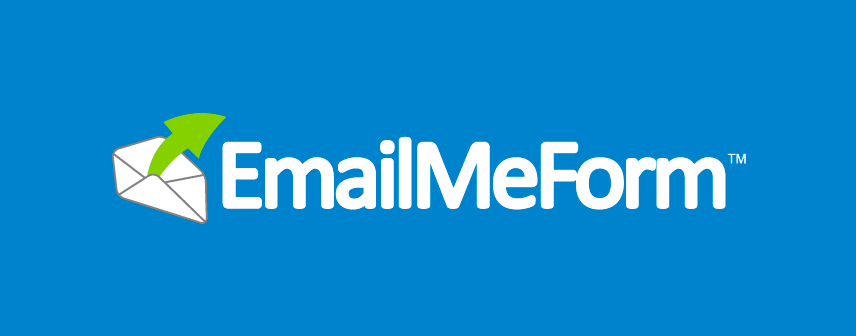What Is Data Entry Software?
A digital tool called data entry software helps people and organizations enter data into computer systems accurately and efficiently. Any kind of data, including text, numbers, and pictures, can be included in this. By streamlining the data entry process, the program minimizes human error and eliminates the need for manual data entry. The capacity of data entry software to expedite the data entry process is one of its primary advantages.
Features like data templates and autofill allow users to enter information quickly without having to type it out by hand. This reduces the possibility of human input errors and saves time. Furthermore, validation and verification tools are frequently included in data entry software to guarantee that the information entered is correct and comprehensive. By removing the requirement for data re-entry, this not only enhances the data quality but also saves time and money.
The ability of data entry software to interface with other programs and systems, like databases or spreadsheets, is an additional benefit. This facilitates smooth data processing and transfer, which makes managing and using the entered data simpler.
Investing in dependable data input software can significantly increase productivity and efficiency, regardless of your role small business owner, data analyst, or individual trying to arrange personal data.With so many options on the market, it's critical to thoroughly assess your demands and select software that provides the features and capabilities that best meet your expectations.
What Are The Recent Trends In Data Entry Software?
Since correct and effective data input is becoming more and more crucial in our fast-paced digital age, data entry software has been developing quickly in recent years. More sophisticated and automated solutions are gradually replacing the conventional manual data entry method, which entails entering data into a computer system. What current developments in data entry software should consumers be aware of, then? Let's examine it more closely.
1. Data Entry Is Being Revolutionized By Artificial Intelligence (AI): Data input is not an exception to the way artificial intelligence has permeated many businesses. With remarkable precision, AI-powered data input software can identify and extract data from a wide range of sources, including documents, photos, and even handwritten text. This makes data entry more dependable and efficient while also saving time and lowering the possibility of human error.
2. Robotic Process Automation's (RPA): Ascent Another technological advancement that is changing the data entry landscape is RPA. It entails automating routine and repetitive operations, such data entry, with the use of specialized software or "bots." This increases overall production by expediting the process and freeing up human workers to concentrate on more difficult jobs.
3. The Use Of Cloud-Based Data Entry: Software Is Growing Data entry has altered dramatically as a result of cloud technologies. Users of cloud-based data entry software can access and enter data from any location with an internet connection. Because it facilitates smooth cooperation and real-time updates, this is especially advantageous for companies with dispersed or remote personnel.
4. Data Entry: On the Go Is Getting Commonplace Mobile data entry has grown in popularity as smartphones and tablets are used more frequently. With the advent of mobile-optimized data entry software, users may now enter data while on the go, whether they are traveling or in the field. This lowers the possibility of data loss or entry delays in addition to increasing efficiency.
5. A Greater Emphasis On Compliance And Data Security: Businesses now place a high premium on data security due to the increase in cyberthreats and data breaches. To guarantee the safety of sensitive data, data entry software now includes strong security measures and compliance standards. To protect data from unwanted access, this comprises access controls, secure storage, and encryption.
Benefits Of Using Data Entry Software
Businesses and individuals seeking to optimize their data management procedures might benefit greatly from the use of data entry software. The conventional approach of human data input has grown laborious and error-prone due to the increasing volume of data being created and gathered. Data entry software provides a number of features and advantages to help overcome these obstacles, which can greatly improve the accuracy and efficiency of data entering activities. The following are some of the main advantages of data entry software:
1. Enhanced Efficiency: The efficiency that data entry software adds to the data entering process is one of the main advantages of using it. Automated data input replaces manual data entry, which is a laborious and time-consuming process, and allows users to enter and retrieve data properly and rapidly.
2. Simplified Procedures: Data input software offers a single platform for data administration, facilitating improved data organization and streamlined procedures. In addition to saving time and effort, this guarantees that data will always be accessible when needed.
3. Less Errors: Manual data entry is prone to mistakes, which might result in inaccurate data. However, by automating the procedure and carrying out data validation checks, data input software reduces these errors and produces accurate, error-free data.
4. Cost Savings: Businesses can save a lot of money by investing in data input software. Automation lowers labor costs by requiring fewer workers to do data entry tasks. Additionally, the costs of later error correction are eliminated when data is input accurately.
5. Customisation: Businesses can customize data entry software to meet their unique data input requirements thanks to its great degree of customisation. This guarantees that the software can adjust to the particular data needs and procedures of the business.
6. Data Security: Sensitive information is protected by built-in security mechanisms in data entering software. Among the security techniques that assist protect data are encryption, access limits, and user authentication. 7. Reporting and Analytics: The capacity to create reports and analyze data is a key advantage of data entry software. This aids in decision-making and offers insightful information about how businesses operate.
Important Factors To Consider While Purchasing Data Entry Software?
For any organization to retain accurate and well-organized data, data entry is essential. As technology has advanced, data entry software has emerged as a crucial instrument for process automation and efficiency enhancement. However, selecting the best data input software can be overwhelming for consumers due to the abundance of options on the market. The following crucial elements should be taken into account when buying data entry software in order to assist you in making an informed choice:
1. Compatibility: Working with your current software and systems is one of the most important considerations. Making sure the data entry program works well with your existing database and procedures is crucial.
2. User-Friendly Interface: To guarantee seamless software uptake and use, a user-friendly interface is essential. Choose software with an easy-to-use interface that is straightforward and accessible to users of all skill levels.
3. Accuracy And Efficiency: Increasing accuracy and efficiency is the primary goal of data entry software. Therefore, selecting software that reduces errors and expedites data entry procedures is essential for saving time and effort.
4. Customization Capabilities: A one-size-fits-all strategy might not be effective because every organization has unique data entry needs. To suit your particular requirements, look for software that provides customization possibilities, such as the ability to create custom templates or forms.
5. Security Measures: Since data entry software handles sensitive data, data security is essential for any firm. To shield your data from outside threats, make sure the software has strong security features like encryption and access limits.
6. Mobile Compatibility: Being able to access data entry jobs while on the go is crucial in the fast-paced business world of today. To enter data at any time and from any location, think about investing in software that is mobile compatible.
7. Integration With Advanced Technologies: Data entry software is no longer restricted to manual input due to technological advancements. To increase accuracy and automate data entry, look for software that incorporates AI and machine learning.
8. Customer Support: Data input software, like any other program, may have bugs or need help using it. Think about the vendor's customer service, including its availability, reaction time, and degree of experience.
9. Scalability: Your data input requirements may grow along with your company. Selecting software that can expand with your company and handle the increasing number of data input activities is crucial.
10. Cost-Effectiveness: Lastly, take into account the software's price and the value it offers. Cheaper software might not have all the functionality you need, while expensive software might not always be the best choice. Determine which program, given your unique needs, delivers the most value for the money.
What Are The Key Features To Look For In Data Entry Software?
There are a few essential features to consider while searching for the ideal data entry program for your company. These features will increase accuracy and efficiency while also streamlining the data entering procedure. The following are the most important factors to take into account while assessing data entry software:
1. User-Friendly Interface: A user-friendly interface is one of the most important features of data entry software. This implies that even for non-techies, the program should be simple to use and comprehend. Time will be saved and the likelihood of mistakes decreased with a clear and simple interface.
2. Customizable Input Options: Since every company has unique data entry requirements, it is critical to select software with customizable input options. By removing fields that are superfluous or useless, you can customize the data entry fields to meet your unique needs.
3. Automation Features: Seek out data entry programs that include features like auto-fill and auto-complete. These features will reduce the likelihood of mistakes and errors while expediting the data entry process.
4. Software Integration: Your data entry program should be able to easily interface with other corporate software, including accounting and CRM programs. By doing this, time will be saved and the possibility of duplicate data will be decreased as data will be effortlessly synchronized across all platforms.
5. Data validation And Error Checking: It's normal to make mistakes while entering a lot of data. Look for data entry software with integrated error-checking and data validation features to guarantee accuracy. This will notify you of any mistakes or information that is missing, enabling you to fix them before to submitting the data.
6. Data Security: In the current digital era, data security is essential. To safeguard your private information, use data entry software that has data encryption and other security features.
7. Reporting And Analysis Features: In addition to facilitating data entry, data entry software should help with data analysis and reporting. Seek out software that lets you create reports in a variety of formats and has configurable reporting options.
8. Customer Service: Having dependable customer service is essential for any software. Choose data entry software that has a solid reputation for timely and helpful responses and provides support via a variety of channels. You can make sure you select a dependable, effective, and user-friendly solution that fits your business needs by taking into account five important characteristics when assessing data entry software. Before choosing a course of action, remember to read reviews and weigh your options. Cheers to data entering!
Why Do Businesses Need Data Entry Software?
Since data entry is entering crucial information into a system accurately and on schedule, it is an essential part of any business. Manual data entry is just not effective enough to meet the demands and pressures of a market that is continuously changing in today's fast-paced corporate environment. Data entry tools can help with that. Businesses can save time and money by automating the data entering process with data entry software.
They increase the overall quality and efficiency of data input by doing away with the necessity for manual data entry, which lowers the possibility of human error. This implies that companies may manage massive amounts of data with ease and speed without hiring more employees. Additionally, companies can collect and store data in a centralized system with data input software, which makes the data conveniently accessible and well-organized.
This facilitates data management and analysis for well-informed business decision-making. Additionally, it enables real-time data updates, giving companies access to the most recent information. Furthermore, data input software has capabilities that may be customized to meet the particular requirements of every company. This implies that companies can tailor the program to meet their own data entry needs, guaranteeing a smooth interaction with their current workflows.
The capacity of data input software to interface with other business tools and systems is one of its main advantages. This makes it possible for companies to do away with manual data transfer and optimize their data management procedures. Additionally, it facilitates enhanced departmental cooperation and communication, which raises overall efficiency and production.
All things considered, data input software is a wise investment for companies trying to improve productivity, cut expenses, and simplify their data management procedures. Businesses may concentrate on more crucial duties, like data analysis and well-informed decision-making, by doing away with the need for human data entry. Therefore, purchasing data entry software is a wise decision if you want to enhance your data entry procedures and grow your company.
How Much Time Is Required To Implement Data Entry Software?
The intricacy of the program, the size of your company, and the volume of data you must enter are just a few of the variables that might impact how long it takes to implement data entry software. The implementation procedure often takes a few days to several months. Smaller businesses with less complicated data entry requirements could be able to finish the process more quickly, but larger businesses with more complicated data might need more time.
The installation and setup procedure, which usually takes a few hours to a few days depending on the software and the resources available to your IT staff, is the first step in putting data entry software into practice. The program must then be configured to match the unique data entry requirements of your company. This can include everything from personalizing data fields and forms to configuring user accounts and permissions.
The intricacy of your data and the degree of customization needed will determine how long this stage takes. The secret to a successful implementation is teaching your staff how to utilize the program once it has been configured. Depending on how many users there are and how comfortable they are with the software, this could take a few days to a few weeks.
Lastly, before putting the software into full production, it is imperative that it be fully tested. This guarantees that any problems are found and fixed before to launch. The software's complexity and the volume of data being submitted will determine how long testing takes.
What Is The Level Of Customization Available In Data Entry Software?
To accommodate users' unique requirements and preferences, data entry software usually offers different degrees of customization. When assessing data entry software, the user interface, data fields, and data validation are the three primary customization factors to take into account, albeit the degree of customization offered may vary depending on the program vendor.
1. User Interface: The software's visual component that users interact with to enter data is called the user interface.The ability to modify the interface's layout and design, such as altering the color scheme or moving the fields to better suit the user's workflow, is one degree of customisation in this area. In order for users to select the most effective layout for their data entry requirements, certain software also enables the creation of bespoke templates.
2. Data Fields: The distinct parts where data is entered are referred to as data fields. In this area, customization is having the ability to add, remove, or modify data fields to meet the user's unique data needs. A business that deals with medical records, for example, might require a different collection of fields than a retail establishment. Users can adapt the software to their unique data entry requirements by customizing data fields.
3. Data Validation: This process makes sure that the information entered is correct and in the right format. Pre-set validation rules are provided by the majority of data entry software to identify typical mistakes, such as inaccurate or missing data. More sophisticated customization in this area is possible with some applications, though. By customizing validation criteria to meet their specific data entry needs, users may lower the likelihood of errors and improve data correctness. It is important to remember that different data input programs may provide varying degrees of customisation.
Which Industries Can Benefit The Most From Data Entry Software?
Data entry software is a useful tool that can improve efficiency and streamline data entering procedures for a variety of industries. Although the benefits of data input software are obvious, purchasers may find it challenging to identify which sectors stand to gain the most from this kind of software. We'll go over which industries stand to gain the most from data input software in our buyer's guide, along with the reasons behind it.
1. Healthcare Industry: The healthcare sector is a strong choice for data input software since it handles a lot of patient data every day. Data entry software can assist medical staff in accurately and swiftly entering and retrieving patient data as electronic health records become more commonplace. Additionally, it makes it simple to integrate with other healthcare software programs, which enhances workflow and data management in general.
2. Retail And E-Commerce Industry: Accurate data input is crucial for inventory management, order processing, and customer information in the cutthroat retail and e-commerce industries. These activities can be made simpler with data input software, which lowers errors and boosts productivity. Additionally, it makes real-time data analysis possible, which can assist companies in making operational decisions.
3. Finance And Accounting Sector: Data processing is essential to the finance and accounting sector, which makes data entry software a useful tool. It can reduce the time and resources needed for manual data input by streamlining data entry for transactions, invoices, and other financial documents. Additionally, by reducing errors and enhancing financial reporting, this can increase data accuracy.
4. Human Resources Sector: The human resources sector, which handles payroll, benefits, and employment records, depends heavily on effective data input. By automating data entry, decreasing human error, and expediting employee data management, data entry software can streamline these procedures. Additionally, it makes it possible to safely store and retrieve private employee data.
5. industrial Industry: Accuracy and speed are critical for data entry activities in the fast-paced industrial environment. Data entry software can digitize paper-based processes and automate data entry for production, inventory, and supply chain management. This can lower the chance of data loss or duplication while also increasing data accuracy.
6. Education Sector: From student records to administrative paperwork, educational establishments manage substantial volumes of data. By automating the data input process, data entry software frees up educators to concentrate on their administrative and instructional duties. Additionally, it makes data analysis easier, assisting schools in making data-driven choices about resource management and student success.
Conclusion
In conclusion, companies and organizations of all sizes must invest in high-quality data input software. It guarantees accuracy and removes the possibility of human error in addition to saving time and boosting productivity. Your budget and particular requirements should be taken into account when selecting the best data entry program. To maximize your investment, look for features like data validation, editable templates, and intuitive user interfaces.
Before choosing a product, be careful to read user reviews and conduct in-depth research. You can locate a trustworthy data entry program that will expedite your data input procedure and boost overall efficiency by using this buyer's guide. Keep in mind that the program you use to enter your data determines how accurate it is, so make an informed decision.







